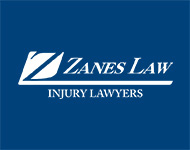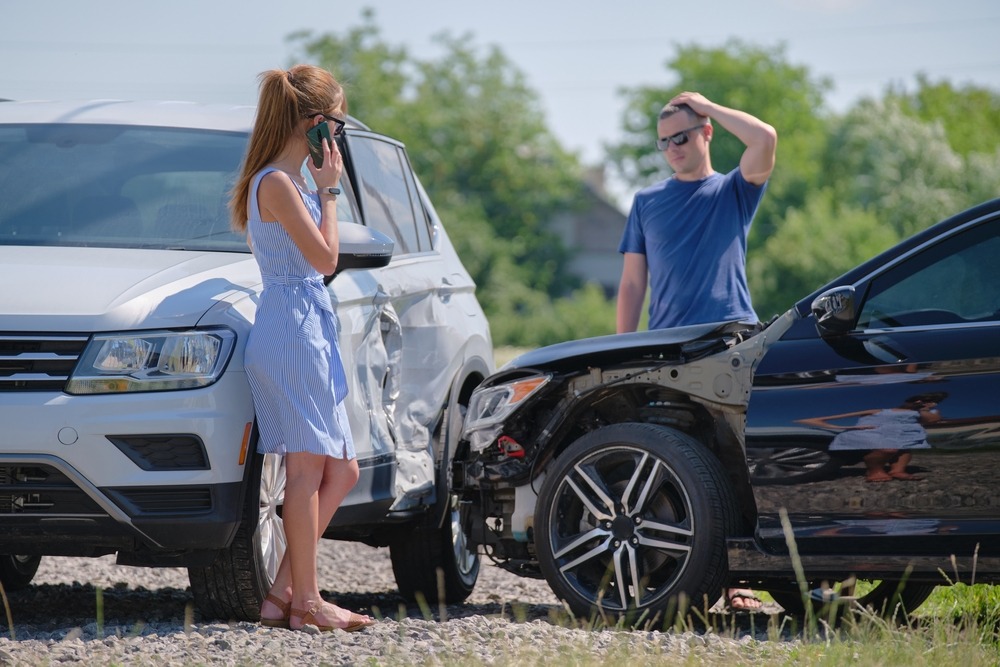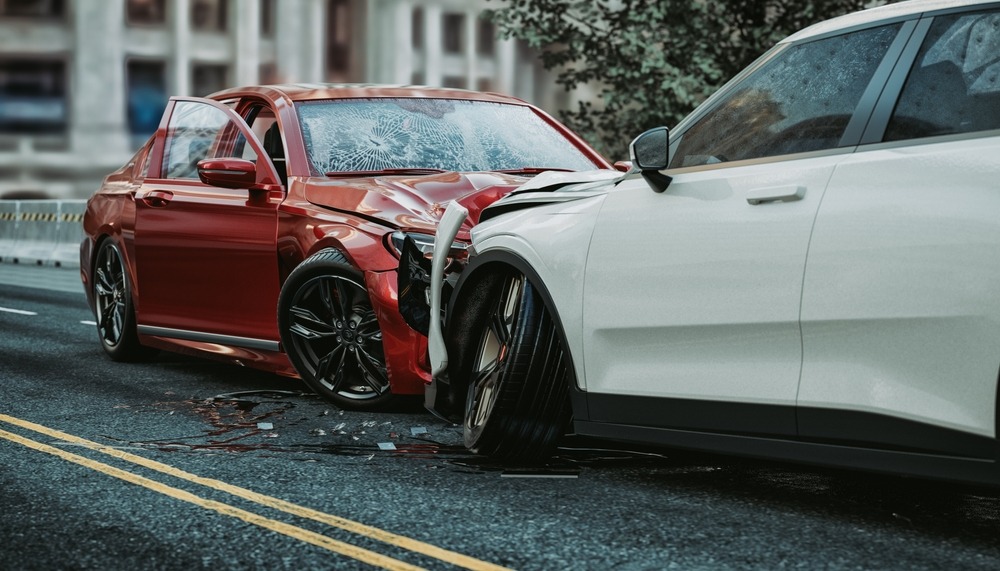![]() Contact Us (866) 499-8989
Contact Us (866) 499-8989
- What to Do if the Police Do Not Arrive at Your Accident Scene
- Legal Requirements After an Accident in Arizona
- A Police Report Is Important to Your Claim
- What Is in a Police Report for a Car Accident in Arizona?
- How to Obtain the Police Report
- Contact Us to Learn What to Do if the Police Don’t Show Up After an Accident in Arizona
- Home
- FAQs
- Car Accidents
- What if the Police Don’t Show Up After an Accident in Arizona?
When you’ve been in a fender bender or crash in Arizona, the police may not always show up. In most circumstances involving parking lot accidents or incidents without injuries, you can file the report in person at the police precinct.
Accidents happen and they involve many different circumstances. You are likely to be unfamiliar with the person who drove the other vehicle. You can take steps to protect yourself from liability after a car crash, and making a police report of your accident is one of the most important.
What to Do if the Police Do Not Arrive at Your Accident Scene
When a car collision occurs, the police are not necessarily compelled to attend if there was only minimal property damage. Call 911 if someone has been injured or there is a fatality.
Following an accident, perform the following actions if the police don’t appear:
- Don’t apologize or admit responsibility
- Photograph the accident site
- Complete a crash report and turn it into the police station
Don’t Admit Fault
If you’ve just been in an accident, you may or may not be aware of all the circumstances that contributed to it. Because of this, admitting fault or saying the accident was your fault is one of the worst errors you can make.
You can jeopardize your ability to pursue accident-related damages if you confess fault for the collision on the spot. Liability for your accident should be decided by the police, your insurance provider, or a lawyer. In an accident, if both drivers are partially at fault, there may also be joint liability.
Take Pictures of the Accident Scene
Especially when the police don’t show up, you should gather as much information as you can in order to submit a complete police report.
The details you gather will be used by insurance companies to establish who was at fault for the accident. The accident report is additionally attached to each driver’s record by the department of motor vehicles.
For a free legal consultation, call (866) 499-8989
Legal Requirements After an Accident in Arizona
The law in Arizona requires a few things of drivers involved in accidents. The first action is really straightforward: stop driving and pull over to the side of the road where you will be safe.
Despite the fact that your accident may not have seemed serious, Arizona considers failure to stop your car and share information with the other driver to be a “hit and run,” which is a felony.
According to A.R.S. § 28-663, persons who are involved in a car accident must:
- Give the other party or on-scene police officer the name, address, and car registration number of the driver of the vehicle that was involved in the collision
- Provide any injury victims of the accident with reasonable assistance
- Show the other motorist in the collision or the on-scene police officer your driver’s license upon request
You could be punished with a Class 3 misdemeanor, which carries fines of up to $500 and 30 days in jail if you fail to provide the necessary information to the police officer or other party involved.
After a collision, take the time to pull over and exchange information with the other vehicle; doing so will shield you from fines and possible criminal prosecution.
A Police Report Is Important to Your Claim
You might wish to make a claim with the at-fault driver’s insurance carrier following an automobile accident. The insurance provider will designate a claims adjuster to your case to look into the collision.
Additionally, they may try to refute the details of the accident you described putting your claim’s value at risk. However, a police report that the responding officer filed can be used as proof and support your account of the accident.
As a result, this document may be used by your attorney in discussions with the insurance provider. You might be able to maximize the compensation for any losses with a police report as evidence.
Click to contact our personal injury lawyers today
What Is in a Police Report for a Car Accident in Arizona?
A police report should include an accurate description of the incident, the number of people in the car at the time of the accident, the names and contact information of any witnesses, any injuries that have been reported, any indications of vehicle damage, the driver’s insurance information, and vehicle information.
If a police record is not made, it may be difficult for the injured party to make a claim in the future. Even if an insurance claim is not made, it is always preferable to go ahead and call the police when in doubt.
Most importantly, police officers who respond to your accident are required to document the events in an accident report. This police report can be one of your claim’s primary sources if you decide to subsequently file a civil lawsuit. Your report is accessible later via the Department Records Unit of the Arizona Department of Public Safety.
Complete a Free Case Evaluation form now
How to Obtain the Police Report
Calling 911 at the accident scene is the best approach to report it. Ask the Arizona DPS or city police officer who completed the report for their name and contact information as well as the report number, and find out how to subsequently request a copy of the police report.
When preparing your remarks for the report, it’s necessary to be honest, but you should never confess responsibility or place blame on the other party. It’s best to avoid making statements about liability.
Additionally, avoid responding to questions if you don’t know the answers. If you provide answers that may not be true, they can be used against you later.
Contact Us to Learn What to Do if the Police Don’t Show Up After an Accident in Arizona
The police are generally required to show up to accident scenes in Arizona and they are required to file a report. Even if you have a little fender bender, it’s important to report the crash to avoid accusations of liability or hit-and-run charges.
Contact a lawyer with Zanes Law after a car crash to get information about the best way to proceed whether the police have arrived or not. We can take your call, and we’re here to help.
Call or text (866) 499-8989 or complete a
Free Case Evaluation form
 Why Bruce Jenner’s Accident is a Lesson for ALL Drivers Out There
Why Bruce Jenner’s Accident is a Lesson for ALL Drivers Out There
Every media outlet has a scope on the recent and fatal Bruce Jenner car crash. Many accounts have recalled the incident in varying detail but none look promising for any party involved including the
 Phoenix Light Rail Crash
Phoenix Light Rail Crash
A very major and scary crash recently closed down a major Central and Indian School Road intersection. Although the crash has long been cleared since Saturday, the collision between a
 Tracy Morgan Lawsuit Finally Settles
Tracy Morgan Lawsuit Finally Settles
Many fans of the famous (now ended) sitcom, 30 Rock, anxiously followed the news after beloved actor and comedian Tracy Morgan was involved in a trucking accident. A Walmart tractor-trailer
 And Then It Happens To You… A Car Accident.
And Then It Happens To You… A Car Accident.
An accident victim who was injured in a car accident in Tucson, Arizona describes her experience in this guest post. You hear about them all the time. You have even witnessed some right in
Wrongful Death Blog Posts:

Are You Ready
For Compensation?
Our mission is to stand up for fellow Arizonans injured by someone else’s negligence. We are here to fight for you and get you the compensation you’re entitled to. We want you to get your life back together as soon as possible. We’re ready to do the heavy lifting of your case so you can focus on your recovery. If you’re ready to have the best team in the state standing behind you, complete the form below today for a free, no-obligation case evaluation, and our expert team will be in touch within 24 hours.
We understand the immense disruption a personal injury can have on someone’s life, and when we take on your case, we will work quickly to help you recover and regain control. We will make sure you get the medical attention you need, shield you from powerful insurance companies, and strive to get you the highest amount of compensation possible.
Want Us to Represent You?
Tell us what happened…
Receive a Free, No-Obligation, Case Evaluation Now
PHOENIX
-
(602) 999-9999
3333 E Camelback Rd, Ste 250 Phoenix, AZ 85018
CENTRAL TUCSON
-
(520) 777-7777
4580 E Grant Rd #101 Tucson, AZ 85712





